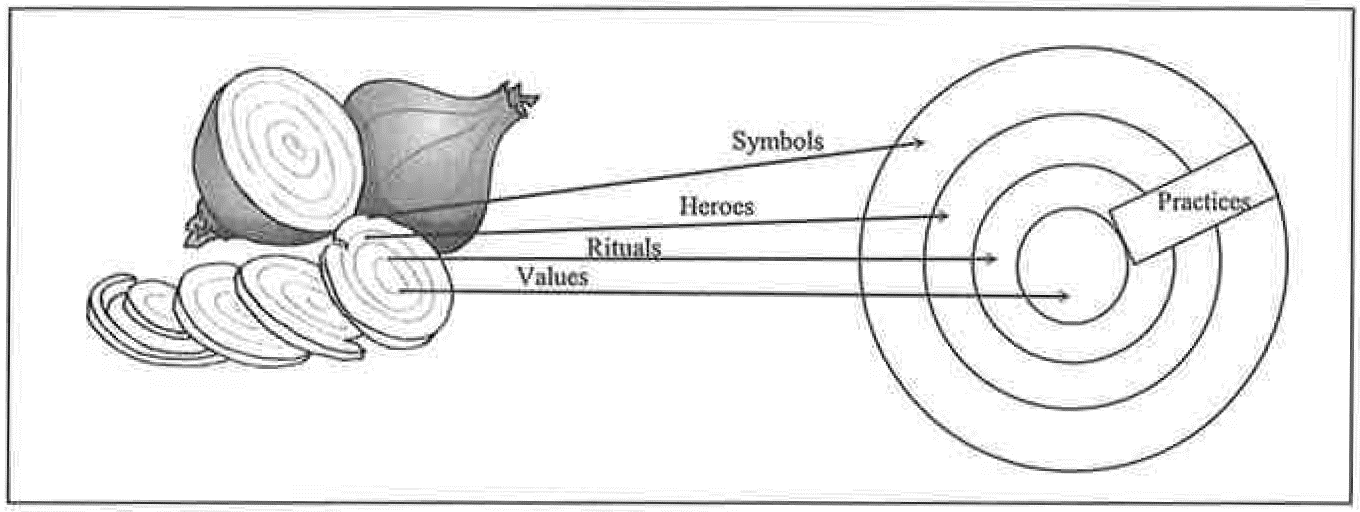
In literature, there are a vast number of cultural elements which can be basically divided into four main criteria, namely symbols, heroes, rituals and value systems (Weidmann, 1995, p. 43).
5..1 – Symbols
For symbols, the passing on and conveyance of cultural phenomena takes place via words, gestures, images and objects of a certain meaning, which can only be understood by those people belonging to the same culture, and are generally based on conversations. On the level of national cultures, symbols also comprise the areas of language and communication. Concerning the culture of an organisation, symbols are e.g. abbreviations, terminologies, forms of address (formal or informal), signs, dress regulations, seating arrangements and status symbols mainly to be only recognized and acknowledged by insiders.
5..2 –
5..3 – Heroes
Real or fictitious, historic or contemporary persons who act as carriers of culture and role models within a culture can be considered as heroes. Nations have their national paragons and folk heroes, generations their role models, whereas, in organisations, the selection and recruitment are often based on the vision of the “ideal employee” or the “ideal manager”. The founders of organizations are of ten seen and adored as mystic heroes (Weidmann, 1995, p. 43).
5..4 – Rituals
Similar to the already mentioned myths like symbols and heroes, rituals are also expressive actions, which cannot only be considered as mere cultural assets but which are also expected to fulfil a practical function (Gussmann/Breit, 1997, p. 117).
“Rituals and ceremonies are as important to organizations and societies as they are to individuals. They serve four major functions: to socialise, to stabilise, to reduce anxieties and ambiguities, and to convey messages to external constituencies. ” (Bolman/Deal, 1984, p. 154)
Rituals are collective activities that might often be technically superfluous but are essential in a certain culture for social reasons. When two Japanese meet and bow, this is as much a national ritual as the greeting behaviour of two Germans shaking hands. Moreover, also various formal activities belong to the recurring processes which are defended for apparently rational reasons: meetings’. the writing of memos as well as the informal way of organising formal activities:_
“Who sits where at a meeting and who talks with whom, how, etc.” are expressions of ritual manners. After all, organizational forms in society, the state and companies are likewise to be allocated to rituals. No matter if it is an official reception or a stock corporation’s general meeting, without relation to the respectively accustomed rituals, one would not be able to meet the expectations..
5..5 – Value Systems
Value systems reflect the deepest level of culture. They represent widespread emotions of which one is often not aware and unable to speak. Rehg1ous beliefs belong to these not easily reflected value systems. They decide on the meaning of good or bad/ clean or dirty/ beautiful or ugly/ natural or unnatural/ moral or immoral. These feelings are predominantly found with members of one culture and intensified with people acting as opinion leaders. Since there are interactions between a culture’s different elements, symbols, heroes and rituals clearly reflect values, whereas value systems are – however, to a far lesser degree – influenced by interdependencies. (Weidmann, 1995, p. 44).